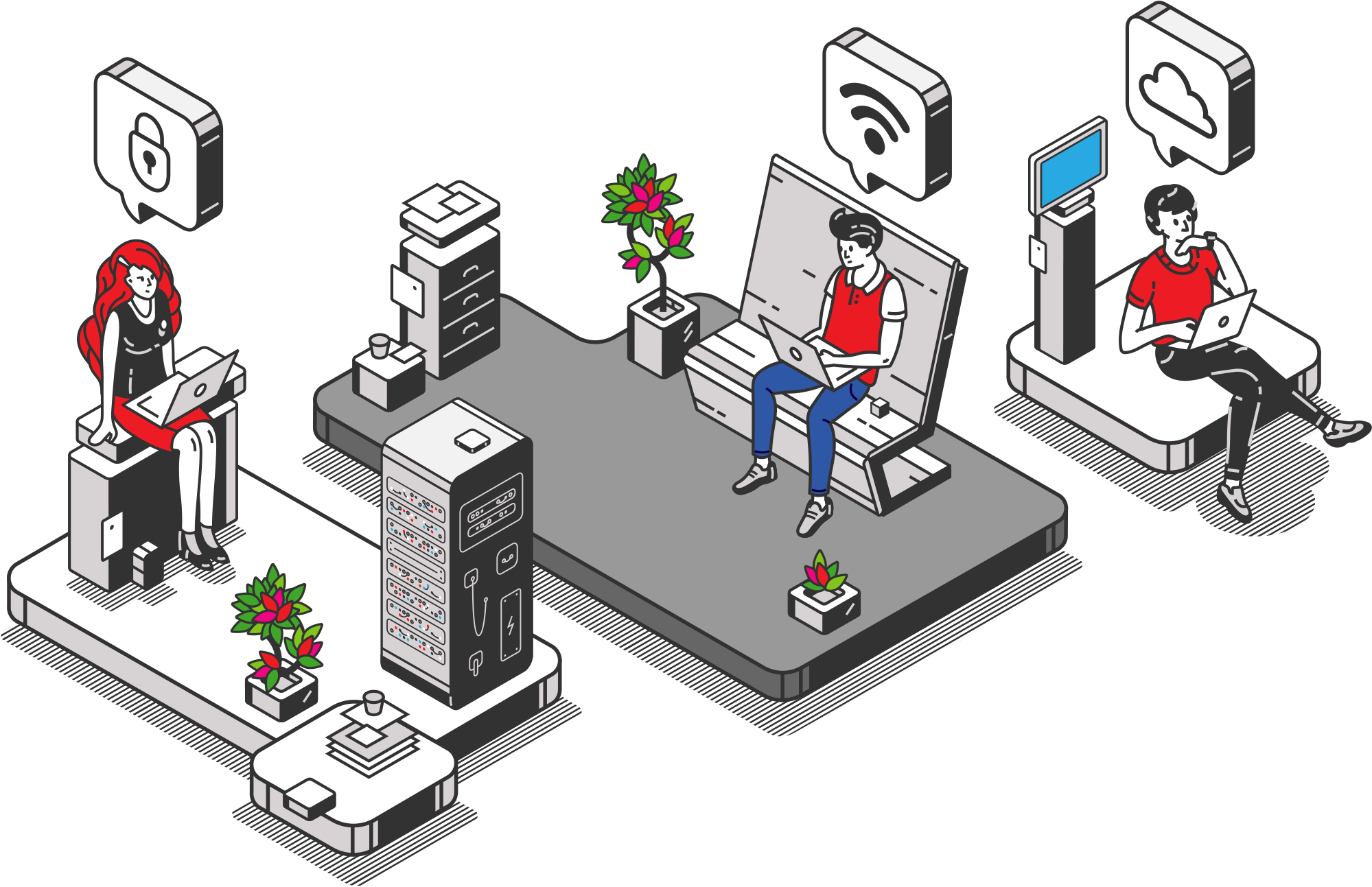Solutions
Cloud Services
Easily increase capacity or add capabilities without investing in new infrastructure, training new personnel or licensing new software.
BENEFITS: Flexibility | Cost-savings | Increased Productivity
Managed Services
We work with your team to identify your needs and then adjust the functionality and performance of your network accordingly.
BENEFITS: Monitoring by our Network Operations Center
Security Services
Blue Bastion, a division of Ideal Integrations, was created to manage security services and offerings.
BENEFITS: Incident Response | Micro-segmentation | Penetration Testing | Vulnerability Management
Connectivity Services
The customization available when using fiber to connect helps you maximize revenue and address daily business challenges.
BENEFITS: High Quality Connectivity | Cost Effective Transport | Ease Bandwidth Allocation | Inherent Security
Infrastructure Services
Virtualization reduces costs, increases system response speed, and creates a layer of abstraction between the computing, storage, and networking.
BENEFITS: Server Consolidation | Disaster Recovery | Business Continuity | Test Environment
Data Protection Services
We partner with leading industry software and hardware vendors to provide complete backup solutions
BENEFITS: Backups | Disaster Recovery | Business Continuity
Secure. Innovative. Integrated.
We combine cutting edge innovations with a creative and skilled team of engineers to deliver customized technology solutions that will help your company succeed. Whether you have five or 5,000 employees, we’ve got you covered – 24 hours a day, 7 days a week, 365 days a year. We’re even here for you on holidays.

We build client loyalty by incorporating your company’s goals with the environmental factors that drive your business, enabling you to realize the highest possible returns on your technology investments. Those individualized strategies are developed by our certified engineers and maintained by our premier ongoing client support.
Awards and Recognition
From ideal integrations comes

The most comprehensive Managed Detection and Response offering on the market today.












